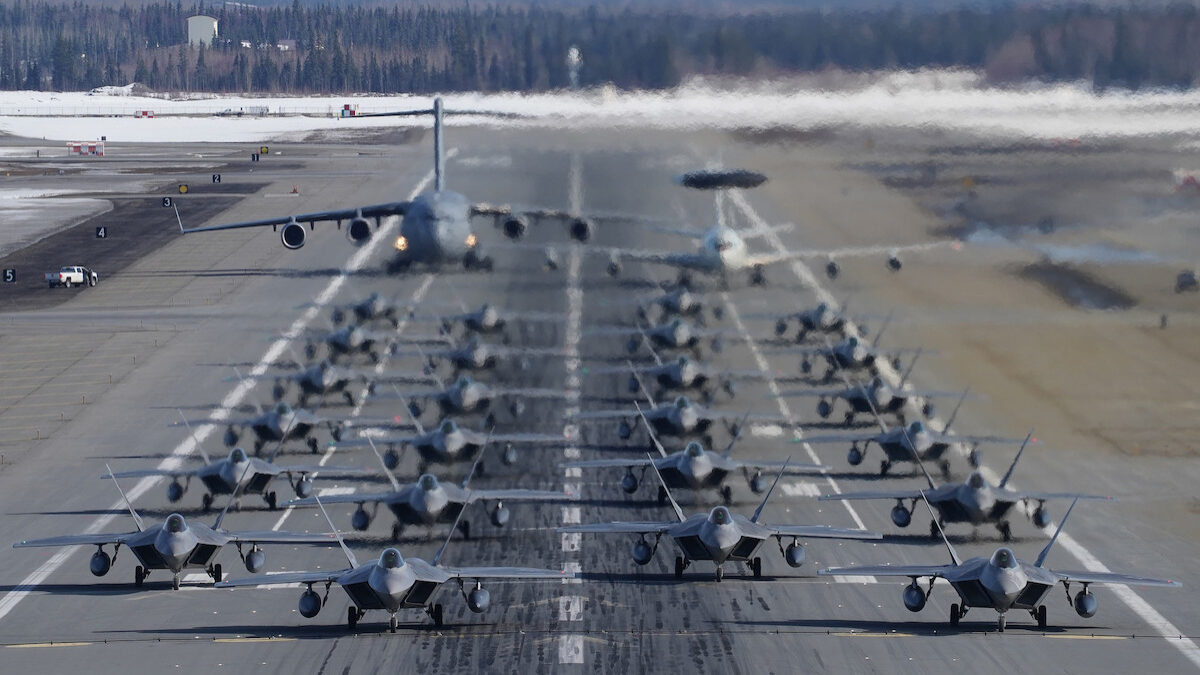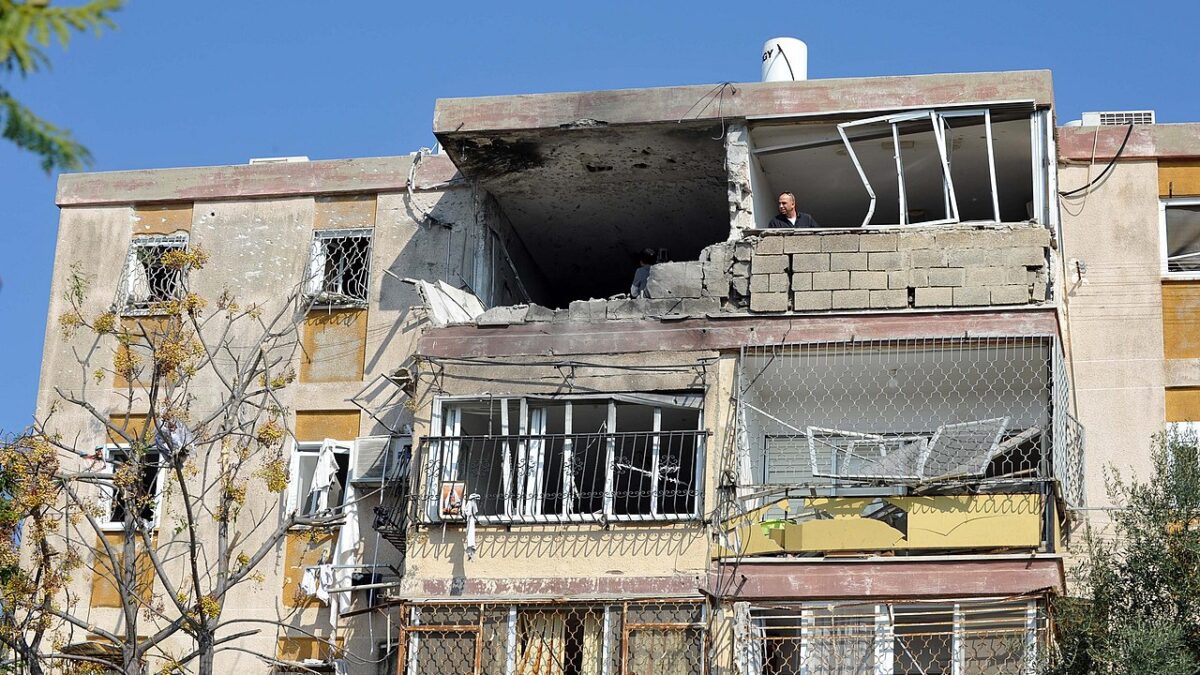The New York Times claimed this week that the United States is providing real-time battlefield intelligence to Ukraine that has enabled the Ukrainians to target and kill approximately a dozen Russian generals, and helped locate and strike the flagship of Russia’s Black Sea fleet last month.
Described as a “classified effort,” the U.S. provision of targeting intelligence to Ukraine “also includes anticipated Russian troop movements gleaned from recent American assessments of Moscow’s secret battle plan for the fighting in the Donbas region of eastern Ukraine,” according to the Times.
The Times’ reporting relies on anonymous “senior American officials,” but if true it represents a sharp and unprecedented escalation of U.S. involvement in the Russo-Ukrainian war, such that Congress should immediately debate and vote on whether to authorize the use of military force in Ukraine.
Indeed, providing real-time targeting intelligence brings the United States right up to the line of belligerence, and arguably over it. The Biden administration seems to understand this. According to the Times, the administration “has sought to keep much of the battlefield intelligence secret, out of fear it will be seen as an escalation and provoke President Vladimir V. Putin of Russia into a wider war.”
The White House is right to fear this outcome, because it’s entirely possible that Putin will absolutely consider this level of battlefield participation by the United States tantamount to an act of war. That’s no doubt why the Biden administration snapped into damage control mode after the Times story about targeting intelligence published on Wednesday.
Adrienne Watson, a National Security Council spokeswoman, criticized the Times’ headline and said in a statement that battlefield intelligence was not provided to the Ukrainians “with the intent to kill Russian generals.” Asked about the Times report on Thursday, Pentagon spokesman John Kirby echoed Watson: “We do not provide intelligence on the location of senior military leaders on the battlefield or participate in the targeting decisions of the Ukrainian military.”
Then on Thursday evening, a second Times story dropped, again sourced to anonymous senior administration officials, detailing how U.S. intelligence helped Ukraine confirm the location of the Russian flagship Moskva, which on April 13 was hit by Ukrainian forces on the ground with two Neptune missiles and eventually sank. The Moskva is the largest warship sunk since World War Two, and a significant loss for the Russian Navy. Some U.S. officials cited by the Times said the American intelligence was “crucial” to the sinking of the Moskva.
The news coincides with reports earlier this week that Russia’s highest-ranking general and chief of the general staff, Valery Gerasimov, was wounded while visiting the Donbas region of eastern Ukraine. (According to the Times, the strike that wounded Gerasimov was conducted without the aid of U.S. intelligence.)
In addition to intelligence sharing, the United States is now providing Ukraine with new and better weapons, including heavy artillery, state-of-the-art tactical drones, and armored vehicles. And that’s just for starters. Last week President Biden asked Congress to authorize $33 billion in weapons funding for Ukraine, on top of the billions we’ve already provided. If the past few months are any indication, as the war drags on we will furnish Ukraine with increasingly advanced (and expensive) weaponry and weapons systems.
It’s time to have a debate about all this in Congress, so the representatives of the American people can at least have a say in the matter before we stumble into war with Russia over Ukraine.
Why? Because the news we might be giving Ukraine real-time Russian targets on the battlefield isn’t some trifling or technical thing. It’s a major development — and potentially a major step toward war. It’s true that the United States has been sharing intelligence with Ukraine since before Russia’s invasion on February 24, and indeed was sharing intelligence with allies in the runup to the invasion, but nothing close to what is described by the Times.
To understand the degree of U.S. escalation the Times report would suggest, a little background is in order. In early March, there appeared to be some confusion among Democrats on the question of intelligence sharing. Rep. Adam Smith, D-Washington, chair of the House Armed Services Committee, told MSNBC’s “Morning Joe” that the United States was “providing some intelligence” but not “real-time targeting.”
Asked about this later, White House Press Secretary Jen Psaki implied that Smith was wrong, saying the United States was providing the Ukrainians “timely intelligence” that “includes information that should help them inform and develop their military response to Russia’s invasion.” When Politico’s NatSec Daily tweeted this, Sen. Marco Rubio, R-Florida, the top Republican on the Senate Intelligence Committee, replied on Twitter that Psaki’s answer was “truthy,” but that “it does not capture the full reality.”
What did Rubio mean? The most likely scenario is that the United States was providing battlefield intelligence to the Ukrainians with built-in latency, a delay of 20 or 30 minutes — enough to plausibly deny that we were actively helping Ukraine target Russian troops and thus avoid getting drawn into the war.
But if the Times report is accurate, we’ve gotten rid of that latency, with huge implications for the U.S. role in the conflict. The Times report goes on to say that “U.S. intelligence support to the Ukrainians has had a decisive effect on the battlefield, confirming targets identified by the Ukrainian military and pointing it to new targets. The flow of actionable intelligence on the movement of Russian troops that America has given Ukraine has few precedents.”
A level of intelligence-sharing that has few precedents might well have huge consequences. As a thought experiment, imagine that during the U.S.-led invasion of Iraq in 2003 we discovered that Moscow was relaying real-time battlefield intelligence about U.S. troop movements to Saddam Hussein’s Republican Guard, and that as a result of this intelligence a number of U.S. units and commanders had been taken out.
Would U.S. leaders have said nothing and done nothing? Let it go with a strongly worded statement? Probably not. There probably would have been some form of retaliation on our part.
Likewise, if U.S. involvement in this war continues to escalate — and especially if the United States continues to give the Ukrainians battlefield targets in real-time — we should expect and prepare for some kind of retaliation by Moscow.
In the meantime, it’s not too much to ask that Congress, as representatives of the American people, debate and vote on whether to authorize a U.S. march to war that’s now well underway.









